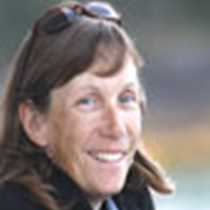Chatham Strait & Pavlof Harbor
This morning we awoke in the beautiful South Arm of Kelp Bay where waterfalls, grassy meadows, high peaks and humpback whales greeted us when we walked out on deck. The morning lighting and the calm conditions helped the whale blows to hang in the air for many minutes, a misty place holder for where the whales had been and a chance for us to see how far they swam between breaths. Before our breakfast, the whales were having their own, doing some lunge feeding on the surface where we occasionally got to see their mouths wide open with baleen exposed open as they scooped huge mouthfuls of prey.
Later in the morning we were treated to an even more spectacular display by humpback whales. As we were traveling along the side, the call went out that a humpback was breaching! Rushing to the decks we were not disappointed. A calf continued to breach many times as we worked our way toward it. After more than a dozen breaches it seemed to tire and then switched to more of a head lunge than a breach. As we watched, we noticed more and more humpbacks in the area, and got to see more of the surface activities for which they are known – tail lobbing and pectoral flipper slapping were added to the repertoire. Finally at lunch time we continued on our way, smitten with these “large-winged New Englanders.”
Our afternoon at Pavlof Harbor proved both relaxing and fascinating. Many of us enjoyed kayaking in the bay, investigating the waterfall and enjoying the peacefulness of being quiet on the water. On the hikes there were plenty of discoveries to be made with the naturalists. Our hike led us from the edge of the beach, through the forest to the waterfall and then along the lake edge. Salmon will be arriving in late summer at the waterfall and heading upstream to spawn, but today there was one lonely early arrival. Irises and orchids were in bloom along the meadow edges and in the forest. The mud beside the lake provided a wonderful canvas on which to paint the story of the animals that had walked there before us. Beavers and rivers otters were the artists today, leaving their tracks and other signs to tell of their visits.




